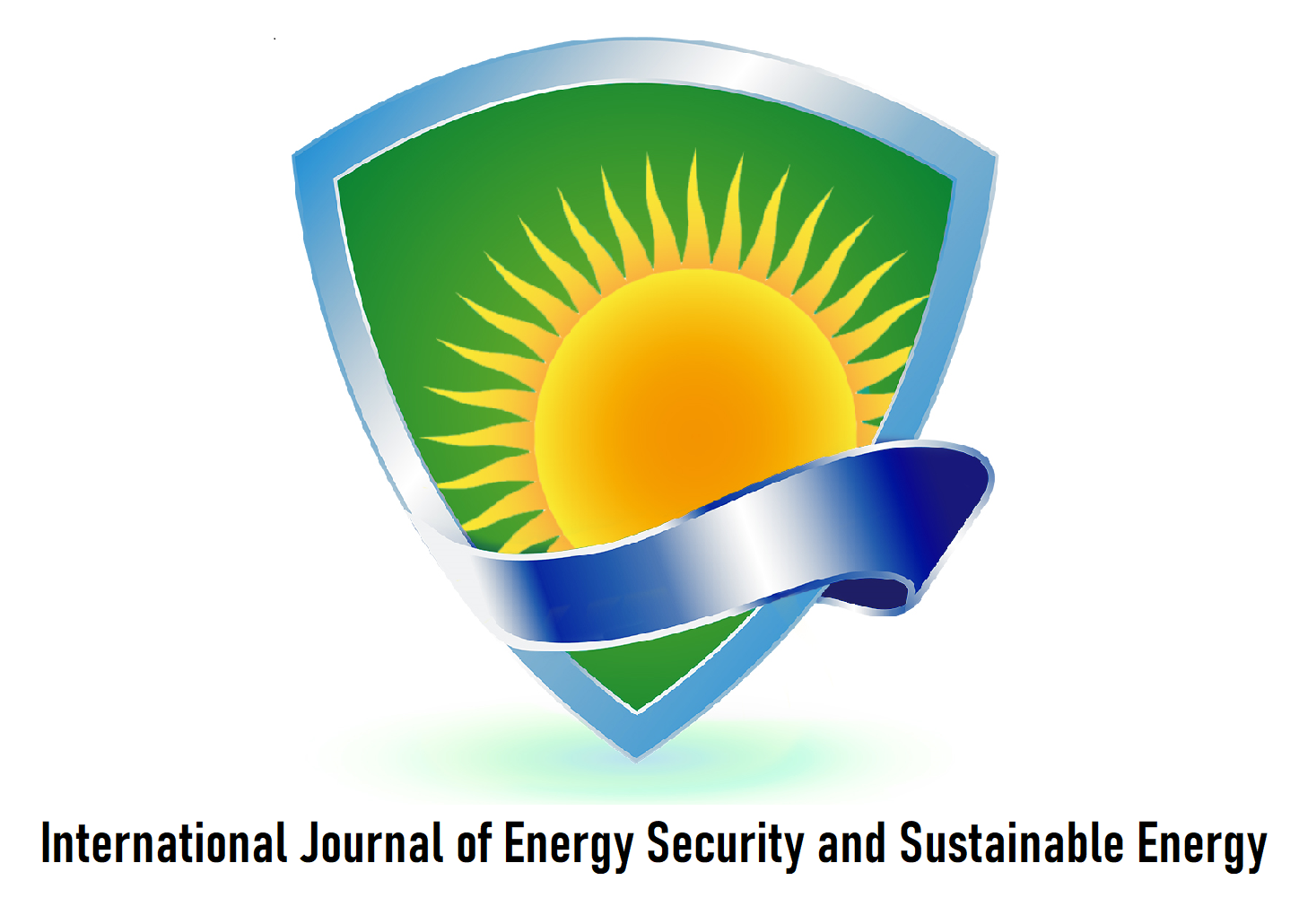ANALYSIS OF OPTIMIZATION METHODS APPLIED FOR RENEWABLE ENERGY INTEGRATION
Mustafa Eydyany0, Hossein Zeynal1, Zuhaina Zakaria2, Mohamed Shaaban3,
0Energy Security and Sustainable Energy Institute
1Dept. of Electrical and Computer, Buein Zahra Technical University
2School of Electrical Engineering, Universiti Teknologi MARA
3Department of Electrical Engineering, Faculty of Engineering, University of Malaya
URL: https://ijesse.net/article/5
Abstract
Abstract. This work attempts to make a thorough study of prevailing optimization methods used in renewable energy application domain. This study takes simultaneously into account the meta-heuristics and heuristics methods as well as the classical methods. Through a pseudo-dynamic simulation, the paper investigates the effect of changes in resource power, load, and unplanned outages on renewable energy performance. In case of load changes, a comprehensive evaluation of a real network with and without renewable resources has been conducted. Simulation results show that renewable sources can be useful in terms of short circuits, losses, and voltage, however compensating measures should be taken to improve transient stability and power quality. Keywords: Optimization methods, Pseudo-dynamic, Optimal operation, Renewable energy sources
چکیده
چکیده: در این مقاله تلاش شده است تا یک مطالعه کامل از روشهای بهینهسازی رایج مورد استفاده در حوزه کاربردهای انرژیهای تجدیدپذیر انجام شود. این مطالعه به طور همزمان روشهای فراابتکاری و ابتکاری و همچنین روش های کلاسیک را در نظر گرفته است. این مقاله از طریق یک شبیهسازی شبه دینامیک، تأثیر تغییرات در توان منبع، بار و قطعهای برنامهریزی نشده را بر عملکرد انرژیهای تجدیدپذیر بررسی میکند. در صورت تغییر بار، ارزیابی جامعی از یک شبکه واقعی با و بدون منابع تجدیدپذیر انجام شده است. نتایج شبیهسازی نشان میدهد که منابع تجدیدپذیر میتوانند از نظر اتصال کوتاه، تلفات و ولتاژ مفید باشند، با این حال اقدامات جبرانی باید برای بهبود پایداری گذرا و کیفیت توان انجام شود. کلمات کلیدی: روش های بهینهسازی، شبه دینامیک، بهرهبرداری بهینه، منابع انرژی تجدیدپذیر
1- Introduction
Renewable energy sources (RES) have attracted attention because of their high energy consumption and environmental effects. Ref.[1] states that biological methods can provide good optimization despite the lack of climate information. For detecting islanding modes, ref. [2] proposes a frequency response feedback method. This paper examines the performance of RES in island mode, short circuit current, and the feasibility of using a battery energy storage system (BESS) without or with wind power. Almost all optimization methods are meta-heuristic or heuristic, and these methods can get stuck in local optimal points. DG optimization problems are best solved by genetic algorithms (GA) and particle swarm optimizations (PSOs) [3]. It has been shown that analytical methods are still useful and that dynamic models [4] can be used to solve these problems. The introduction of electric vehicles [5] and the uncertainties associated with solar and wind production should also be considered in all of these cases. Ref.[6] provides an overview of environmental, building, and sustainable energy optimization methods. RES and Microgrids (MGs) are optimized using conventional methods and artificial intelligence in [7]. With PSO, a method is presented in [8] for determining the optimal size of MGs and their optimal performance. According to [9], flexible economic load flow is possible in the presence of electric vehicles using the Newton-Raphson method. Under boundary conditions, Newton-Raphson-Seidel offers a more accurate and faster solution of the load distribution equations [10]. In [11], mixed integer linear programming (MILP) is used to model economic stochastic distributions that incorporate thermal and pumped storage generators. Economic dispatch, optimal power flow, energy management strategy and unit commitment [12], can all contribute to achieving minimum energy costs. Hybrid RES and appropriate optimization techniques can effectively address environmental impact, cost, and reliability issues [13]. Using a pseudo-dynamic and renewable generation time pattern, we discuss the optimal operation of two systems (an IEEE standard network and Iranian real grid-connected RES). The conclusion and references are provided at the end of the article.
4-Conclusion
Computer simulations are required to study various aspects of RES plugging into the grid. Based on the results found, the optimal Integration of renewable energy in all loading modes improves the overall system performance in terms of load flow and short circuits. The quality of network power quality of the system, however, requires corrective actions such as filtering. Moreover, RES improves transient stability of the system at light loads and decreases it at heavy loads. As a result, it is necessary for operators to increase their secondary alternatives for the system operation and to provide advanced protection.
Reference
[1] C. Mekontso, A. Abdulkarim, I. S. Madugu, O. Ibrahim, Y. A. Adediran. “Review of Optimization Techniques for Sizing Renewable Energy Systems”, Computer Engineering and Applications. Vol. 8, No. 1, pp. 13-30, 2019. [2] G. Ghardashi, S. Majidi, M. Gandomkar, M. Eidiani , S. Dadfar, “Accuracy and Speed Optimization of Microgrid Islanding Detection based on PV using Frequency Reactive Power Feedback Method”, 16th International Conference on Protection & Automation in Power System, University of Sistan and Baluchestan, January 19, 2022 - January 20, 2022. [3] M. Eidiani, N. Asghari Shahdehi, H. Zeynal, “Improving Dynamic Response of Wind Turbine Driven DFIG with Novel Approach”, IEEE Student Conference on Research and Development. SCOReD 2011, 6148770, 19th - 20th Dec. 2011, Putrajaya, Malysia, pp.386–390 2011. [4] M. Eidiani, H. Zeynal, “New approach using structure-based modeling for the simulation of real power/frequency dynamics in deregulated power systems”, Turkish Journal of Electrical Engineering and Computer Sciences. Vol. 22, pp.1130-1146, 2014. [5] H. Zeynal, Y. Jiazhen, B. Azzopardi, M. Eidiani, “Impact of Electric Vehicle’s Integration into the Economic VAr Dispatch Algorithm”, IEEE Innovative Smart Grid Technologies. ISGT Asia, Conference- Asia, Kuala Lumpur, Malaysia, May 20-23, pp. 780–785, 2014. [6] A. Sadollah, M. Nasir, Z. W. Geem, “Sustainability and Optimization: From Conceptual Fundamentals to Applications, Sustainability”, Vol. 12, pp. 1-34, 2021. [7] H. Zeynal, A.K. Zadeh, K.M. Nor, M. Eidiani, “Locational Marginal Price (LMP) Assessment Using Hybrid Active and Reactive Cost Minimization”, International Review of Electrical Engineering. Vol. 5, No. 5, pp. 2413–2418, 2010. [8] S. Phommixay, M. L. Doumbia, D. L. St‑Pierre, “Review on the cost optimization of microgrids via particle swarm optimization”, International Journal of Energy and Environmental Engineering. Vol. 11, pp. 73–89, 2020. [9] H. Zeynal, Y. Jiazhen, B. Azzopardi, M. Eidiani, “Flexible Economic Load Dispatch Integrating Electric Vehicles", IEEE 8th International Power Engineering and Optimization Conference. PEOCO2014, Lankawi, Malaysia, 24-25 March, pp.520-525, 2014. [10] M. Eidiani, “Assessment of voltage stability with new NRS”, PECon 2008, IEEE 2nd International Power and Energy Conference. Dec. 1-3, Johor Baharu, Malaysia. Pp. 494–496, 2008.
Download PDF Paper




 Copyright
©
Copyright
©